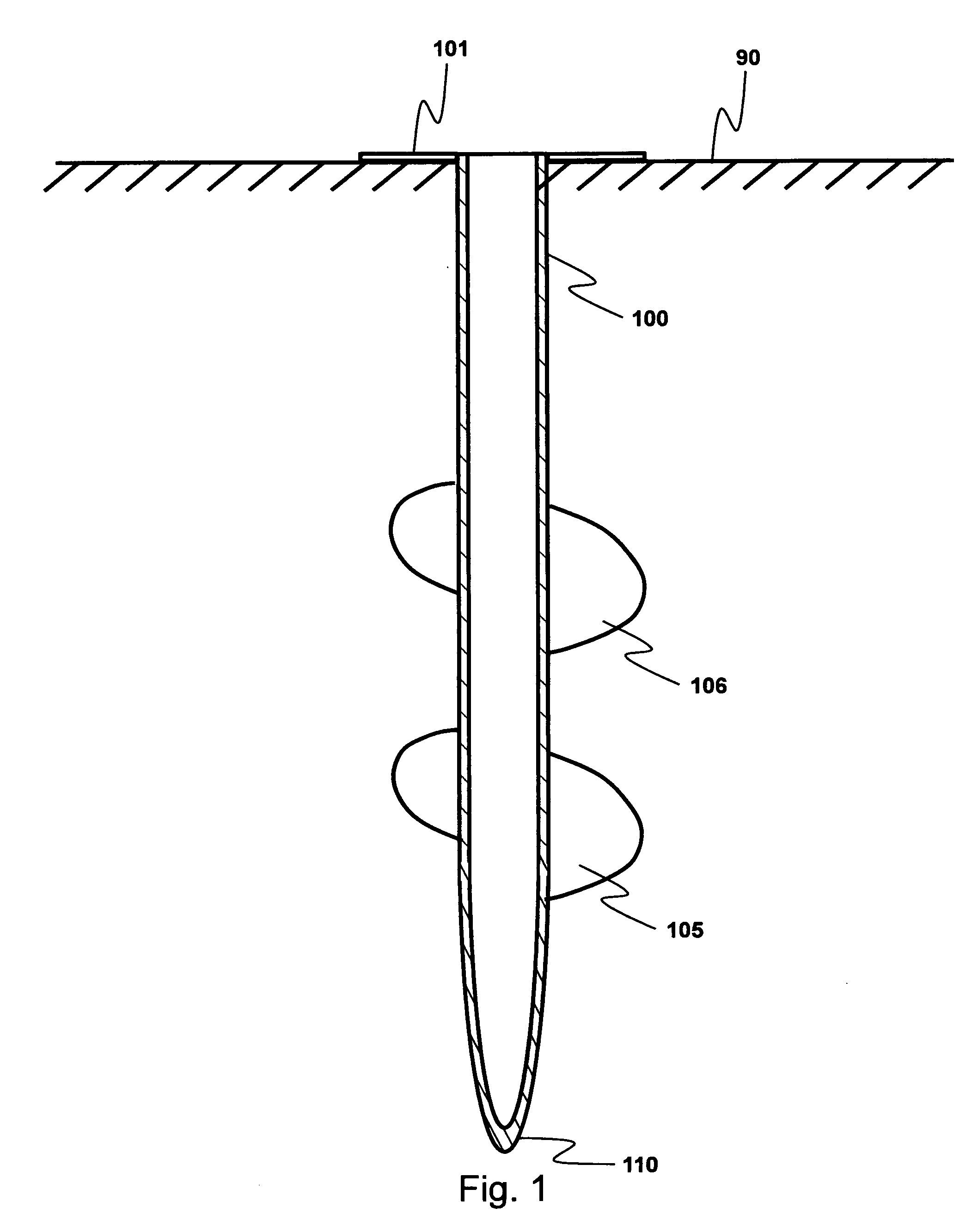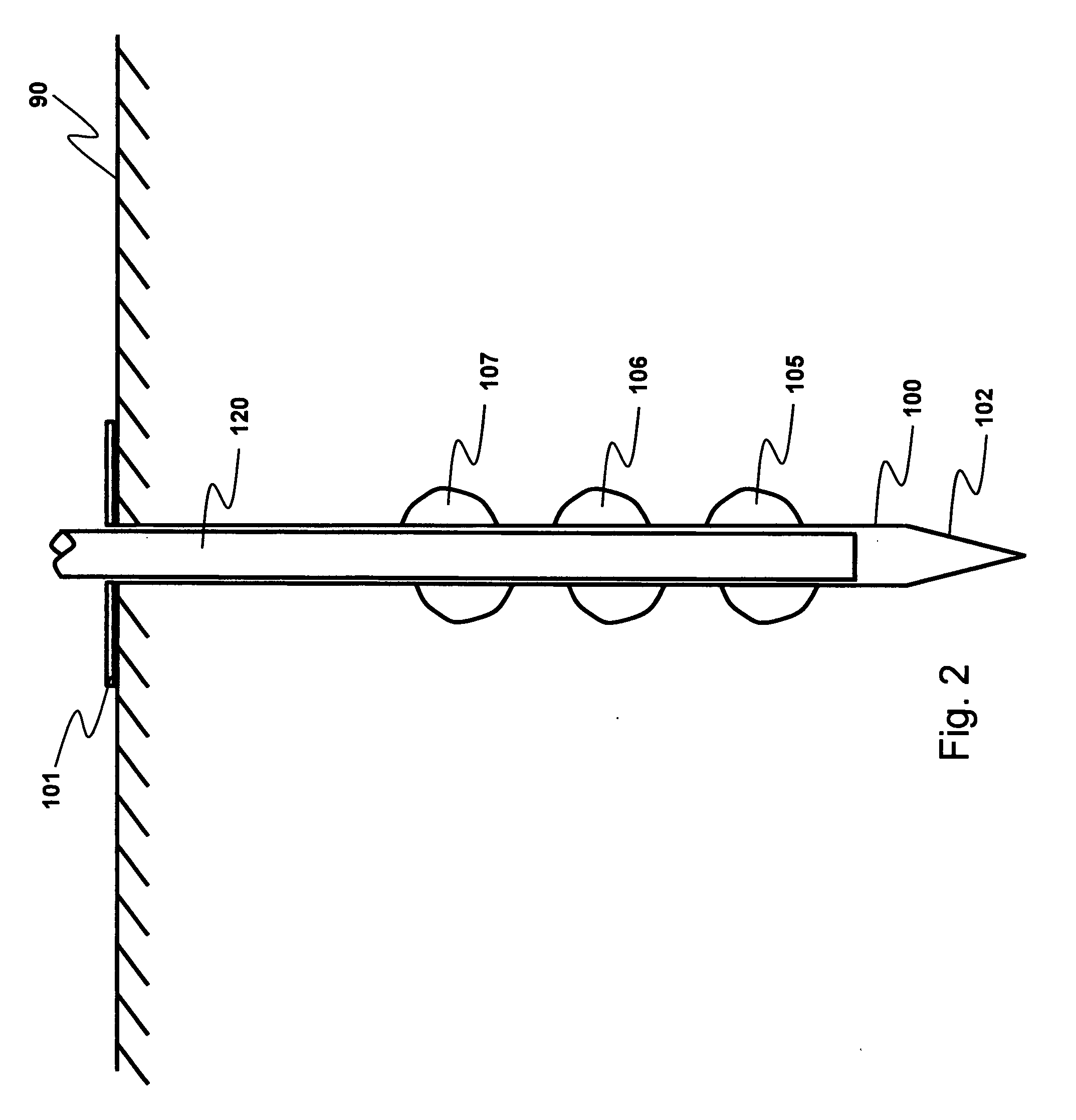Solar photovoltaic support and tracking system with vertical adjustment capability
a technology tracking system, which is applied in the direction of comonautical navigation instruments, optical radiation measurement, instruments, etc., can solve the problems of increasing the horizontal load generated by local wind conditions, reducing the vertical load of solar photovoltaic support, and reducing the shading of one collector.
- Summary
- Abstract
- Description
- Claims
- Application Information
AI Technical Summary
Benefits of technology
Problems solved by technology
Method used
Image
Examples
Embodiment Construction
There are multiple aspects to the present invention. Nonetheless, the features disclosed herein may usually be employed independently of one another. It is, however, preferable to employ all of them simultaneously to provide an array of solar collectors which are easily, quickly and economically installed while at the same time providing an array system for which shading problems are either reduced or eliminated and while also providing a flexibly controllable dual axis tracking system. It is noted, however, that the augur system for installation may be employed whether or not a tracking or telescoping system is employed. Likewise, the telescoping system may be employed in more standard poured foundation systems whether or not the tracking head described herein is employed. The tracking head described herein may also be employed whether or not an augur base or telescoping poles are employed. In general, though, it is preferred that all of these features be deployed in the same syste...
PUM
 Login to View More
Login to View More Abstract
Description
Claims
Application Information
 Login to View More
Login to View More - R&D
- Intellectual Property
- Life Sciences
- Materials
- Tech Scout
- Unparalleled Data Quality
- Higher Quality Content
- 60% Fewer Hallucinations
Browse by: Latest US Patents, China's latest patents, Technical Efficacy Thesaurus, Application Domain, Technology Topic, Popular Technical Reports.
© 2025 PatSnap. All rights reserved.Legal|Privacy policy|Modern Slavery Act Transparency Statement|Sitemap|About US| Contact US: help@patsnap.com



